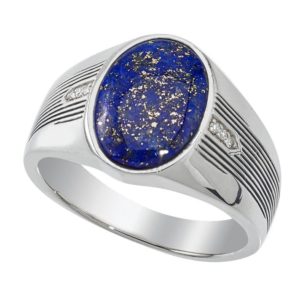For 2018, Be Market-Centered
Bain & Company just released its predictions for the luxury market in 2017, calling for 5% growth this year to reach €1.2 trillion globally. After what it calls a “reboot” from 2015 to 2016, it sees the luxury market reaching a “new normal” of 4% to 5% annual growth through 2020.
 The management consulting firm hails retailers who are market centered—not industry, competitor or product centered—will succeed. Bain’s report calls for luxury leaders to look within to truly align with the needs, expectations and desires of the next generation of customers.
The management consulting firm hails retailers who are market centered—not industry, competitor or product centered—will succeed. Bain’s report calls for luxury leaders to look within to truly align with the needs, expectations and desires of the next generation of customers.
Bain identifies key trends shaping the luxury market’s future, including the development of an “evolving ecosystem of channels” based on how customers want to engage with a brand; one-on-one relationships with next generation consumers; and messaging and storytelling that’s about the individual (for me) through inspirational conversations and engaging experiences.
Jewelers must understand customers up close and personal, not as a market segment, but as individuals, advocates Pam Danziger, president of Unity Marketing, Stevens, Pennsylvania and author of “Shops That Pop! 7 Steps to Extraordinary Retail Success”.
Omni-channel Retailing
The biggest retail trend for 2018 is the growth of omni-channel retailing, a combination of both in-store and online shopping that’s experienced seamlessly across multiple channels via whichever mode the customer prefers, hails the customer relationship management platform Salesforce. It’s a model in which customers interact with multiple sales and media channels at once.
A key takeaway for Bain: “Channels are now coming together in an interdependent and integrated ecosystem around the customer.”
“All the touch points you can use to make things convenient, timely, informative, and personal matter,” says Jay Gerber for the diamond jewelry manufacturer, WR Cobb, East Providence, Rhode Island. He says it’s critical for jewelers to have a mobile-responsive website, as consumers are communicating, researching and buying things on their phones for convenience and immediacy.
Online sales represent less than 10% of luxury brand sales, says Bain, but are expected to grow to 25% by 2025. The report calls out the complementary roles of retail and wholesale, and the need to leverage online as a support platform for all physical channels. “This is not the market where everyone will do well,” says Alok Mehta, CEO of IDD, New York, who cites vendor-retailer partnerships critical to success. “Retailers have been extremely conservative in how they manage their inventory and marketing budgets. They realize they need a few strong vendor partners to be successful.”
Gerber says companies like WR Cobb that offer an ecommerce platform adaptable to mobile and tablet devices can help jewelers develop and manage their omni-channel network. “We offer jewelers the ability to brand and customize their ecommerce platform with their own inventory, as well as have access to our virtual stock, and enjoy features such as 3D rotational videos, high-quality product images, in-store kiosk, and online marketing services.” He says jewelers have been slow to embrace all that digital interaction offers their customers, including the option to buy online.
One-on-One Relationships
The most important thing jewelers can do is to listen to their customers, urges Scott Rauch, president SHR Jewelry Group, a division of SDC Designs, New York. “Consumers have a loud voice and are using social media and reviewing product to tell brands and our industry what they want and is relevant to them and why.”
 One of the secrets of making retail personal that was uncovered in Unity Marketing research, says Danziger, is that the more time storeowners spent on the sales floor meeting and greeting customers and modeling the service experience they want to see in their sales staff, the more successful their store.
One of the secrets of making retail personal that was uncovered in Unity Marketing research, says Danziger, is that the more time storeowners spent on the sales floor meeting and greeting customers and modeling the service experience they want to see in their sales staff, the more successful their store.
Throughout the customer experience Danziger encourages jewelers to be proactive in building a vibrant contact list. As part of the in store welcome, invite guests to sign up to receive product specials and event news. When closing a sale, offer to email or text receipts to garner contact details. Invite customers to join a gift club that incentivizes checking in with your store first for ideas. Engage customers across all touchpoints to gather and manage important client data.
Creating Experiences
“Making retail personal means crafting the entire shopping experience around the needs and desires of the people in the community you serve,” says Danziger. “People want a product experience when they shop, but it takes more than that to get them off their computers, out of their homes, and into the store. People crave to be more than just a customer. They want that sense of community that only community-based retailers can give.”
The physical environment of the store—its scent, lighting, windows, and displays—is essential to the shopping experience, says Danziger, noting that these cues guide customers to tell your story. Create photo/share-worthy window/showcase displays; develop in-store holiday traditions and shopping habits; host trunk shows and influencer/stylist/designer events; and offer special services like personal shopper and custom design.
Vendor-retailer partnerships are essential to be able to offer these experiences, says Mehta, not only to help deliver ecommerce opportunities, but also to provide a suite of support services like stock balancing, trunk shows, display and packaging, and marketing programs.
Neil Shah of Shah Luxury, New York adds that his company’s partnership with jewelers in custom design services is a boon to business. “Whether modifying elements of an existing style or designing something from scratch, we manage the work so jewelers can focus on running their business. It has been a game changer for retailers.”
modifying elements of an existing style or designing something from scratch, we manage the work so jewelers can focus on running their business. It has been a game changer for retailers.”
Deloitte cites that because consumers have unlimited alternatives and often bounce between brands, touchpoints and influencers, it’s more difficult for retailers to attract shoppers without some level of customization.
Leave a Reply
You must be logged in to post a comment.